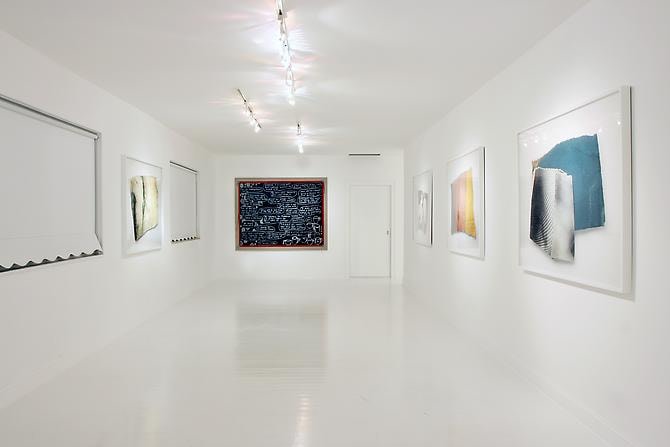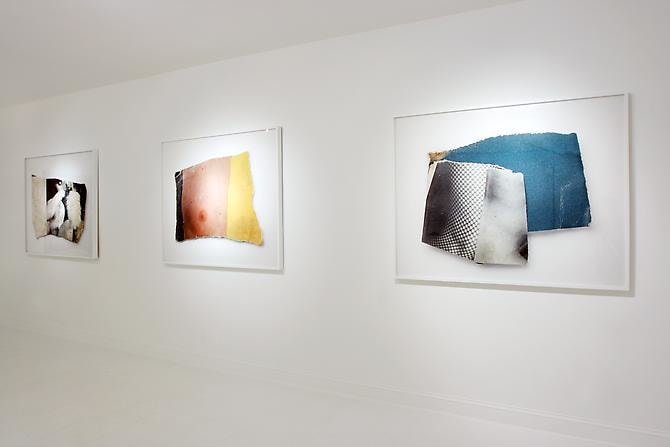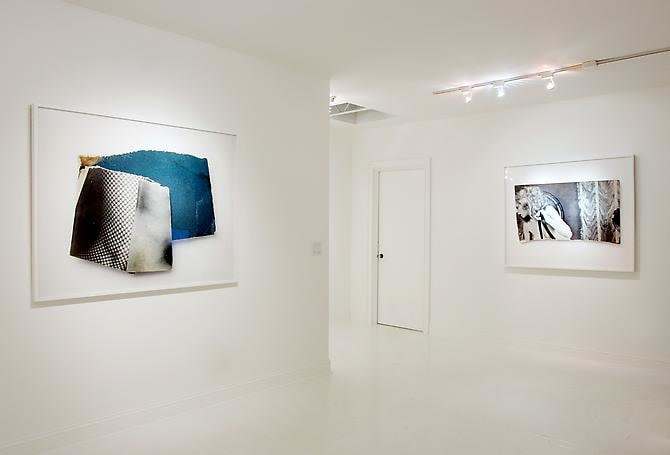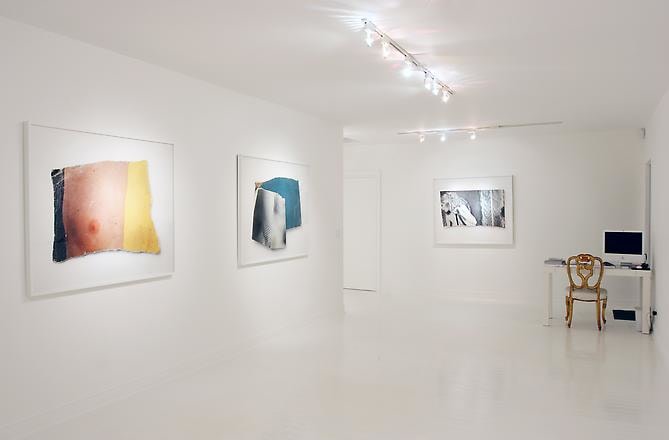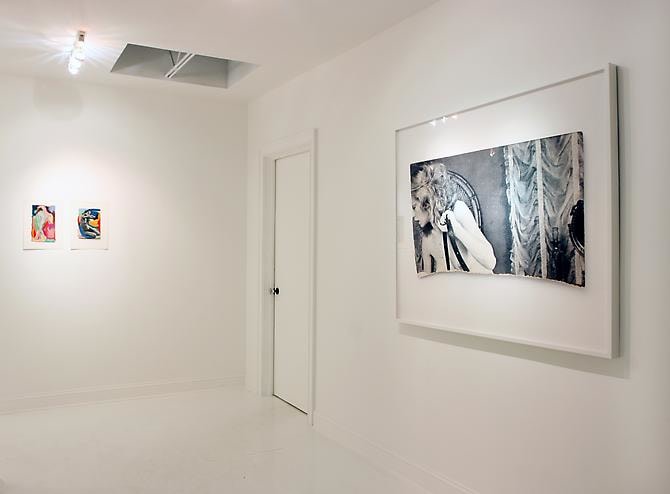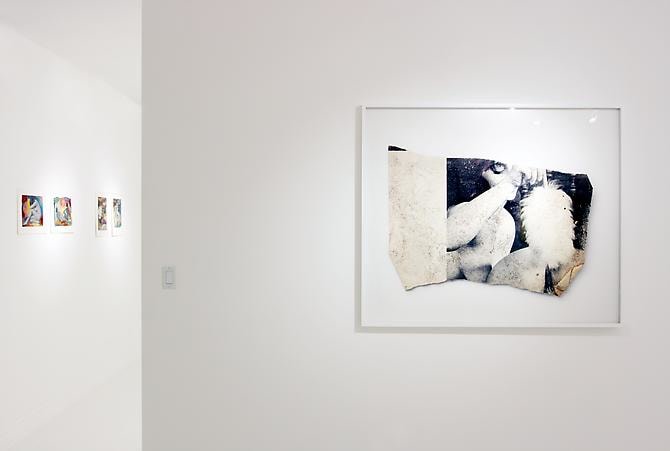On February 27 1989, I found some ripped up pornography on the top floor of a parking garage at Chicagoʼs OʼHare Airport. There was dirty snow on the ground, and the scraps were wet and muddy. In spite of, or perhaps because of their wretched state, the images were brilliant. Out of context, their eroticism was dazzling. Filthy, their perversity was heightened. They were hot, nasty, and illicit.
I collected them, dried them out, and stored them in a Sekonic light meter box. The more I looked at the images, the more I thought about how they came to be scattered among the parked cars. In my mind, a man had arrived home after a journey, destroying the evidence of his sexual curiosity by ripping up these magazines and tossing them to the winds. Though he could have simply stuffed them into a garbage receptacle, he chose the more cathartic act of destruction. Of course I assumed it was a “he” who did this.
I found scraps from three publications. One was traditionally heterosexual. Another showed transvestites. It is the third publication, a magazine called “Bondage in the Buff,” published by House of Milan, which these scraps came from. In these SM fantasy scenarios, gestures and expressions are exaggerated, self- conscious and playful. The hairstyles, shoes and natural body types are specific to the late 1980s.
The texture and pulp of the paper, when enlarged, gains massiveness, visually transforming into particle board or weathered plywood. The scale foregrounds the halftone dot patterns. The scraps are transformed into objects. Once torn into pieces in order to hide an individualʼs desire, they roar back into life as a tribute. A momentary gesture, the act of tearing, is given permanence and weight in these photographs.

